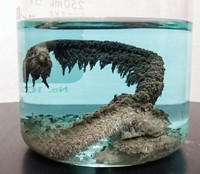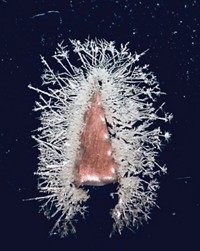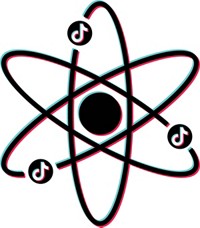Advertisement
Grab your lab coat. Let's get started
Welcome!
Welcome!
Create an account below to get 6 C&EN articles per month, receive newsletters and more - all free.
It seems this is your first time logging in online. Please enter the following information to continue.
As an ACS member you automatically get access to this site. All we need is few more details to create your reading experience.
Not you? Sign in with a different account.
Not you? Sign in with a different account.
ERROR 1
ERROR 1
ERROR 2
ERROR 2
ERROR 2
ERROR 2
ERROR 2
Password and Confirm password must match.
If you have an ACS member number, please enter it here so we can link this account to your membership. (optional)
ERROR 2
ACS values your privacy. By submitting your information, you are gaining access to C&EN and subscribing to our weekly newsletter. We use the information you provide to make your reading experience better, and we will never sell your data to third party members.
Education
Newscripts
Inefficient Engineering, Dragon Economics
by Lauren K. Wolf
April 25, 2011
| A version of this story appeared in
Volume 89, Issue 17

Watering a plant is usually a simple task: Fill a container with water, hold it over the thirsty specimen, and pour. The process doesn’t typically involve pulleys, toy train tracks, and waterwheels … unless it’s part of the annual RUBE GOLDBERG MACHINE CONTEST.
This year, the competition—named for the Pulitzer Prize-winning cartoonist who drew elaborate contraptions for completing simple tasks in complicated ways—required competitors to build a machine that takes at least 20 steps to water a plant in less than two minutes. The winning team, from the University of Wisconsin, Stout, entered a themed device in the March 26 national contest that did it in 135 steps. This is the second year in a row that the UW Stout team took first place.
The secret to the group’s success, says UW Stout team captain Andrew Behnke, is a well-thought-out theme and layout. The machine needs “to maximize viewing angles for the audience but also be complicated enough to compete,” he explains to Newscripts. His team’s winning contraption this year told the story of a haunted estate in the swamps of Louisiana where the dead spring to life when a gate is cranked open. For its grand finale, the device watered a faux venus flytrap.
What surprises people most about UW Stout’s winning streak, Behnke says, is that “we actually don’t have any engineers on our team.” Behnke is a senior business education major, and other teammates study retail merchandising and applied science. Competitors just have to have a “natural love” for the contest to enter, Behnke contends, pointing out that UW Stout’s machine this year took nine months and 2,000 hours to build.
Next year’s contest will require teams to build devices that pop a balloon. Because Behnke is graduating soon, he’s now recruiting students to the UW Stout team to carry on the tradition in 2012.
Another seemingly nonsensical, but fun, activity that requires an inherent passion for the subject matter is calculating the 15 wealthiest characters in the fictional universe. Forbes.com ranks its favorite FAKE BILLIONAIRES from literature and screen annually, but this year, Executive News Editor Michael Noer took some time to prove to readers that the list is based on serious, nerdy thought.
In an April 6 blog post entitled “How Much is a Dragon Worth?” Noer gives fans “some idea of just how deep the rabbit hole goes” by revealing his scientific formulas for ranking Smaug, a treasure-hoarding dragon in J. R. R. Tolkien’s novel “The Hobbit,” seventh on this year’s list. Just behind sixth-place Tony Stark (aka Iron Man), Smaug has a net worth of $8.6 billion, Noer says, owing primarily to the mound of gold and silver that the dragon sleeps on, the diamonds stuck to his belly, and the dragon’s coveted Arkenstone of Thráin—a gem Noer describes as “the Hope Diamond on steroids.”
Noer estimates the dragon’s size and the volume of his treasure mound by using details from the book and even consulting a guide from the fantasy role-playing game Dungeons & Dragons. He also explicitly calculates how many 5.99-carat diamonds would be encrusted on the protective scales of Smaug’s belly to eventually arrive at the final ranking.
Despite the fact that Tolkien describes Smaug as “unassessably wealthy” and his gold as being “beyond price and count,” Noer assessed and counted away. “Make up the numbers?” he scoffs. “Ha.”






Join the conversation
Contact the reporter
Submit a Letter to the Editor for publication
Engage with us on Twitter